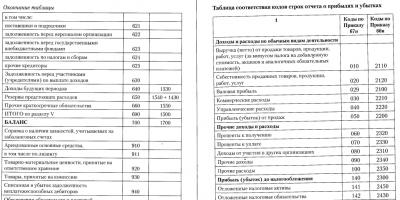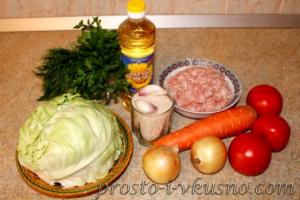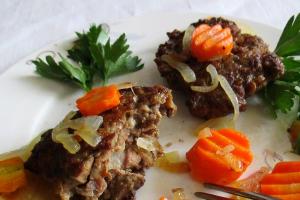French cuisine is famous for its large number of different sauces. Some of them are prepared for specific dishes, others perfectly complement the taste of several dishes, and others are universal or almost universal. Béarnaise sauce belongs to the third group. Most often it is served with meat and poultry, but it harmonizes no less well with fish, seafood, and vegetables. The versatility of béarnaise sauce also lies in the fact that it is good both hot and cold. However, it must be taken out of the refrigerator in advance so that it warms up to at least room temperature, since otherwise its consistency will be too thick and it will be difficult to pour it over the dish. The sauce itself is quite thick and fluffy, and has a pleasant creamy tint. It is prepared on the basis of white wine vinegar, butter and raw yolks, with the addition of a certain set of herbs and spices that give the liquid seasoning a unique taste and aroma.
Cooking features
Some sauces require high culinary skill to prepare, while others are quite simple to prepare. Béarnaise sauce (also often called bearnaise sauce) has medium difficulty in preparation. This means that when preparing it, you must strictly follow the technology and know several subtleties. In this case, even an inexperienced cook can cope with the task.
- To prepare the sauce, raw yolks are required. Preference should be given to eggs from domestic chickens, as their yolks are brighter and give the sauce a more pleasant hue. At the same time, it is very important to be aware of the health status of laying hens so as not to become infected with salmonellosis. If you do not have such data and the eggs were purchased in a store, they must be thoroughly washed before use using soap and a sponge.
- The traditional recipe for béarnaise sauce calls for the use of shallots. It has a more subtle and noble taste compared to onions, but can be replaced with them if desired. This will not have a serious impact on the taste of the finished sauce.
- Another important ingredient is white wine vinegar. Substituting red vinegar may affect the color of the finished sauce. Therefore, if there is no white wine vinegar in the house, it is better to replace it with apple vinegar.
- The fourth ingredient is butter. It is required most of all to prepare the sauce, and the taste of the finished dish radically depends on its quality. In this case, replacing butter with spread will not work.
- Separately, it is worth mentioning the spices that are traditionally used to prepare béarnaise sauce. This is ethragon, also known as tarragon, and chervil - a spicy herb whose appearance, taste and aroma remind us all of the well-known parsley. It is difficult to find an adequate replacement for tarragon, but you can replace chervil with parsley without even thinking about it.
- Prepare bearnaise sauce in a water bath, gradually adding the ingredients and constantly whisking the sauce. If you put a bowl of sauce on the fire, it will immediately turn into an omelette. If you try to mix everything at once to speed up the process, the sauce will separate.
- If, despite all your efforts, your sauce still separates after cooking, you can add crushed ice to it and shake. If this does not help, try adding another yolk and then straining the sauce.
Serve béarnaise sauce with meat and fish dishes, poultry dishes, and vegetables. It will give their taste extraordinary shades.
Classic recipe for béarnaise sauce
- shallots – 30 g (or 25 g onions);
- butter – 150 g;
- water – 80 ml;
- white wine vinegar (6 percent) – 40 ml;
- ground white pepper - a pinch;
- chicken egg yolks – 2 pcs.;
- fresh chervil or parsley – 30 g (can be replaced with 10 g dried);
- fresh tarragon (tarragon) – 15 g (can be replaced with 5 g dried).
Cooking method:
- Wash and peel the onion, cut it into very small pieces.
- Separate the yolks from the whites. You won't need whites to make the sauce, but you shouldn't throw them away, because they can serve as the basis for preparing other delicious dishes.
- Melt the butter until liquid and leave for a while to cool to just above room temperature.
- Finely chop the fresh herbs and mix.
- Place onions and peppers in a small bowl or frying pan.
- Mix vinegar with two tablespoons of water. Pour this mixture over the onions and place over low heat. When the mixture has boiled by about half or even a little more, add the remaining water and bring the mixture to a boil. Transfer the onion to a container in which you will prepare the sauce in a water bath.
- Combine chicken yolks with a third of the melted butter and whisk. Pour into a container with the onion, beat again and place in a water bath.
- Heat, whisking, to about 40 degrees. Add butter in small portions, continuing to beat.
- When the sauce thickens sufficiently, add herbs and stir. At this stage the sauce can be slightly salted.
Despite the fact that béarnaise sauce can be served cold, the optimal temperature for it is considered to be about 60 degrees. You can heat it in a water bath. Béarnaise sauce cannot be heated in the microwave, as this will cause it to separate and lose its attractiveness.
Adapted recipe for béarnaise sauce
- onion – 60 g;
- apple cider vinegar (6 percent) – 100 ml;
- chicken egg yolks – 2 pcs.;
- butter – 0.24 kg;
- water – 20 ml;
- ground black pepper – 5 g;
- tarragon - 3 sprigs;
- thyme – 1 sprig;
- bay leaf – 1 pc.
Cooking method:
- Remove the skin from the onion and chop it finely.
- Tear off the leaves of tarragon and set aside.
- Place onion, bay leaf, thyme sprig and tarragon stalks (without leaves) in a small container, add pepper. Pour vinegar over it all and place on low heat. Reduce the mixture by about half. Strain through a sieve.
- Beat the yolks, adding a spoonful of cold water and vinegar that has cooled to room temperature, infused with the aromas of herbs.
- Heat in a water bath. Add the butter in small pieces, whisking the sauce each time until smooth.
- When the oil runs out, add finely chopped tarragon leaves to the sauce, stir and remove from the water bath.
The sauce prepared according to this recipe has the same consistency as the original béarnaise sauce and a very similar taste, a little spicier. To obtain a milder taste and an even more pleasant aroma, some housewives replace part of the vinegar with lemon juice, but not more than half.
Béarnaise sauce, which has a delicate consistency and creamy taste, is an excellent addition to any dish; it complements the taste of lean meat and poultry especially well.
Considering that the original recipe requires products from Béarn - the southern region of France, where the name comes from - we take the risk of reproducing it, adapting it to our area. Chicken eggs, butter and basic spices are close to a common denominator everywhere, but wine, vinegar and herbs will become variable quantities, replaced by similar ones.
We follow the sequence of actions and maintain the temperature of the water bath in the region of 60-80 degrees. When lowered, the Béarnaise sauce will not thicken and will remain liquid. Conversely, if the boil is too active, it will curl into an omelette.
Béarnaise is good to serve both cold and hot. The sauce is often prepared in advance and kept in a sealed container on the refrigerator shelf for a couple of days, reheated if necessary. It's up to you whether to baste fish, meat, chicken, or dip bars of raw, steamed, baked vegetables and root vegetables, bread, and crackers.
Cooking time: 30 minutes / Number of servings: 2-3
Ingredients
- butter 100 g
- eggs 2-3 pcs.
- dry white wine 100 ml
- white natural vinegar 2-3 tbsp.
- sweet onion 1 pc. large size
- celery stalks 2-3 pcs.
- garlic 2-3 teeth.
- tarragon/tarragon (fresh or dried) to taste
- salt, pepper to taste

Preparation

In France, they boil shallots from the southern regions - they are sweetish, without any sharp pungency. Small bulbs, about the size of a walnut, are often found. If imported shallots are not available for sale, replace them with Yalta shallots or other lettuce ones, as a rule, all of them are also from the south. Onions may be too spicy, and leeks may be too juicy.
If you're lucky, use fresh chervil, tarragon (aka tarragon). Let me tell you, greens are not often on the shelves of my stores. But since chervil is from the celery family, its spicy aroma is close to parsley, I duplicate it with young celery stalks. And from the extracted ones I take dried tarragon (tarragon). Remember, herbs are rich, with a strong smell. Fresh will require more, dry - less. First, wash and peel the celery, red onion, and garlic cloves. Chop as finely as possible to speed up the cooking process.

Place the slices in a ladle, pour white vinegar (wine or rice), and light white wine. Many cooks reduce the concentration and dilute it with plain water. Throw in a pinch of dried tarragon and send it to the top heat. Bring to a boil, reduce the temperature and cook without a lid for 15-20 minutes, evaporating the volume of liquid by about half. Stir from time to time, separating the pieces stuck to the walls, and do not let it burn.

Grind soft cubes and remaining liquid as desired until silky smooth or leaving noticeable “grains.” This is how they do it, for example, with tartar, and I prefer the second option; as a result, the consistency is something between homogeneous mayonnaise and crushed salsa.

Transfer the pureed pulp into a fireproof bowl, place it in a water bath and put it back on the fire. Maintain a moderate boil in the lower compartment and add the separated egg yolks to the puree one at a time (whites are not needed in this recipe). Perhaps two yolks will be enough. As it brews and thickens, decide whether to add a third yolk. Beat with a whisk or a convenient spoon, leaving no clots.

Drop in a portion of butter, continue circular movements - completely dissolve. Season with salt and ground hot pepper, be sure to taste. Stir the béarnaise sauce until thick and remove from the stove.

Remove the bowl from the bath and let the thickened mixture cool completely. If you run along the walls, a clear mark remains and there is no liquid.
We fill the regular gravy boat with freshly prepared béarnaise sauce and serve it with vegetables and herbs on a fast day, as well as with fish, poultry, and meat. Bon appetit!


Béarnaise sauce
Béarnaise sauce, otherwise known as béarnaise sauce, is a very savory French sauce suitable for grilled dishes. If you want to surprise your guests with an unusual sauce, try Béarnaise sauce.
Béarnaise sauce is one of hundreds of ingenious French sauces. It should be served with grilled dishes, but I personally have tried it with some other meat and fish dishes - it’s also very good. Béarnaise is prepared very quickly, simply and from those products that most often already exist at home. If you want to diversify the taste of some familiar dish, try serving it with French Béarnaise sauce.
Béarnaise sauce (French: Sause bearnaise) is a traditional French egg-butter sauce that is served with fish, meat and vegetable dishes.
The recipe for making béarnaise sauce was discovered and developed in France. They named it in honor of King Henry IV of France, a native of Béarn.
The famous béarnaise sauce is most often mentioned in French recipes. It goes well with meat and poultry dishes. In France, bearnaise sauce is usually served with fish dishes. This sauce also adds a good flavor to vegetable dishes.
When preparing béarnaise sauce, egg yolks are sometimes used as an additional ingredient. They are added to the mass along with melted butter.
Ingredients:
- Shallots - 2 pieces
- Tarragon sprig - 3 pieces
- Wine vinegar - 3 tbsp. spoons
- Dry white wine - 3 tbsp. spoons
- Egg yolk - 3 pieces
- Warm water - 1 tbsp. spoon
- Butter - 150 grams
- Salt and black pepper - – To taste
Preparation:
- Take a saucepan and simmer a mixture of the following ingredients over very low heat: shallots, wine vinegar, wine, black pepper and chopped tarragon sprigs. Cook this liquid mixture, stirring, for about 10 minutes.
- At the same time, melt the butter over low heat. Beat the egg yolks with a little water, add the melted butter and beat well.
- As soon as the sauce has acquired the desired consistency, remove it from the blender bowl, transfer it to a saucepan and serve at room temperature. I repeat, the sauce is ideal for grilled dishes, or just any meat or fish.
In a blender, grind the boiled mixture from the first step until smooth, then add the mixture of yolks and butter, and beat again until a homogeneous consistency is formed. The consistency of the sauce should be quite thick, not runny.
Bon appetit!
Read also: How to cook?
Bearnaise sauce
Bearnaise sauce
Béarnaise sauce is a sauce based on wine and vinegar, as well as eggs and herbs.
For 1 glass::::3 tbsp. l. dry white wine::: 3 tbsp. l. white wine vinegar:::1 shallot:::a few sprigs of tarragon and chervil without leaves:::3 egg yolks:::120 g softened butter:::salt, ground white pepper
Boil a mixture of dry white wine, wine vinegar, 1 chopped shallot and several sprigs of tarragon and chervil without leaves in a saucepan over medium heat. The mixture should evaporate by two-thirds.
Remove the sprigs of greenery and strain the sauce. In a separate bowl, beat the yolks with 1.5 tsp. cold water. The mass should turn white and become foamy. Mix with the evaporated mixture and place the pan in a water bath. Continue whisking the sauce until the mixture thickens. Remove the pan from the bath and let the mixture cool slightly. Whisking constantly, gradually add 120 g of softened butter, spoon by spoon. Add the chopped tarragon and chervil leaves and reduce the sauce a little, seasoning it with salt and ground white pepper to taste. Serve the sauce warm. It goes well with grilled beef or veal.
Glossary of culinary terms. 2012 .
See what "Béarnaise sauce" is in other dictionaries:
Sauce béarnaise Béarnaise sauce (French Sauce béarnaise) French egg butter sauce. Prepared from melted butter, shallots... Wikipedia
Sauce béarnaise Béarnaise sauce (French Sauce béarnaise) French egg butter sauce. Made from melted butter, shallots, chervil, tarragon and white wine vinegar. The sauce got its name from... Wikipedia
Four different sauces Sauce (from the French sauce, gravy) or gravy is a liquid seasoning for a main dish and/or side dish... Wikipedia
Béarnian- oh, oe.béarnaise adj. Béarnaise sauce. Zelenko 1902 104 … Historical Dictionary of Gallicisms of the Russian Language
Roux based sauce. Roux (fr. roux) is a heat-treated mixture of flour and fat, usually melted butter. Commonly used as a thickener in sauces. It is one of the main components for classic sauces of French cuisine,... ... Wikipedia
Traditional... Wikipedia
Thai fish sauce Fish sauce (fish sauce) is a sauce obtained from small fish that have been fermented in a marinade. Has a specific smell. Pisces ... Wikipedia
Green salsa next to red in Mexican style Green sauce is the name of several different sauces containing large amounts of herbs, namely: Italian Salsa verde, French Sau ... Wikipedia
This term has other meanings, see Dip. Various types of corn chip dips... Wikipedia
Produced by Lea Perrins ... Wikipedia
Books
- The Chef's Big Book Meat Fish Vegetables Learning to Cook Masterpieces
- The Big Cook's Book. Meat, fish, vegetables. Learning to cook masterpieces, Magne-Moreno M.. A delicious collection of recipes for the world's most exquisite cuisine with detailed step-by-step instructions and photographs! Onion soup, poultry consommé, bisque soup, salmon gravlax, lacquered…
Béarnaise sauce is a variation of one of the five main sauces of French cuisine - hollandaise sauce. It bears the name of the province of Béarn in the south of France, the birthplace of the French king Henry of Navarre, a famous gourmet. However, it would be a mistake to say that this dish was invented by Henry or someone at his court.
The sauce was created much later than the reign of Henry the Fourth - in the thirties of the 19th century. History has not preserved the name of the master who invented such a culinary masterpiece. But the original recipe for the seasoning has been preserved, which has been perfecting poultry and veal dishes for two centuries.
France is generally rich in sauces and seasonings. And this is no coincidence. The same meat or vegetables, sprinkled with different sauces, will have a completely special taste. A good sauce can also “hide” a cook’s mistake and save a seemingly lost dish.
The sauce we will prepare today is considered a classic in France. It is served with lean meats of various cooking methods. In modern cooking, it is also added to meat-based sandwiches. But this is already the influence of American cuisine. Today we will try to cook according to the classic recipe.
What to cook with
Béarnaise sauce, or otherwise called bearnaise, is very close in texture to the famous and very common mayonnaise sauce in our latitudes. The fundamental difference is in the choice of oil. If vegetable oil (olive or refined sunflower oil) is used for our usual mayonnaise, then bearnaise uses only premium quality butter. No spreads or margarines are suitable. They will destroy the sauce.

Spices are also important. When preparing the original French sauce, you must try to find exactly those ingredients that are indicated in the recipe and avoid substitutions. Moreover, now in our supermarkets you can find any product you like.
This also applies to shallots. In our country it is better known as the magpie onion. It is, of course, very close to onion, but has a different taste, sweeter. So it’s better not to change it to other types of onions.
Apart from shallots, you can’t make béarnaise sauce without fresh tarragon and chervil. You will need separate leaves and plant stems separately.
Tarragon is a strong, spicy, pungent herb that must be used carefully.
Chervil is softer. In appearance it is very similar to parsley, and in taste too. Perhaps this is the only ingredient that can be substituted when preparing sabernaise sauce.

You will also need white wine and white wine vinegar, white pepper, chicken eggs, cold water and butter.
Product proportions:
- white wine (must be dry) - 3 tbsp;
- white wine vinegar - 3 tbsp;
- butter - 120 g;
- shallots - 1 head (20-30 g);
- egg yolks - 3 pcs.;
- tarragon - 2-3 sprigs;
- chervil - 2-3 sprigs;
- white pepper - to taste;
- salt - to taste;
- cold water - 1.5 tsp.
How to cook
The béarnaise sauce does not take long to prepare, about 15 minutes, and in principle, there is nothing complicated in this process. The only important condition is temperature. It is very important that the temperature of the ingredients does not exceed 70 degrees, that is, the sauce should under no circumstances boil or approach the boiling point, otherwise it will simply separate and nothing good will come of it. Otherwise, everything is quite simple.
Act one
Finely chop the shallots. Grind white pepper into powder. Separate the tarragon and chervil leaves from the sprigs. Mix wine, wine vinegar, onion, and ground pepper in a saucepan. Dip the sprigs of herbs there and simmer over low heat. As soon as the liquid has reduced by a third, remove from heat and strain. Discard the onion and sprigs. Leave to cool to room temperature.

Act two
In a separate bowl, melt 100 g of butter. Leave it alone. The oil should remain warm, but not hot. Before you start adding it to the sauce, check the temperature just in case - it should not be higher than 70 degrees. Ideally - 50-60 degrees.

There is no need to melt 20 g of butter. It should remain just softened.
Act three
Wash the remaining herbs, dry them well (there should be no water on them) and chop finely.
Act four
Organize a water bath. Try on the dishes you will place on it - the water should not touch the bottom.
Act five
While the water is boiling, start whisking the yolks with salt and cold water. Do this continuously until you get a whitish foamy mass. After this, carefully, so as not to immediately extinguish the foam, combine the yolks with the wine-vinegar mixture, place in a water bath and whisk everything directly over the fire. The heat must be reduced so that the sauce does not boil under any circumstances.
When everything is well combined with each other, start adding drop by drop, and then, when your bear does not thicken, add warm melted butter in a thin stream. And don't stop whisking! Add a piece of unmelted butter and beat again without stopping.
Act six
When you have already whipped all the butter and the béarnaise sauce has acquired a smooth, shiny structure, add tarragon and chervil leaves, very finely chopped in advance, into it. They should evaporate in just a minute, and you can turn them off. Béarnaise sauce with tarragon and corvelle is ready.
It can be served either warm or cooled. This is an incredibly tasty seasoning for meat. It can decorate any lean meat dish. Even ordinary boiled veal will turn into a royal dish worthy of Henry of Navarre if it is topped with a seasoning such as béarnaise sauce.
Little secrets
- Béarnaise sauce can be stored in the refrigerator for no more than two days.
- If after storage you want to serve the sauce warm, you can only heat it in a water bath, otherwise it will separate.
- If your sauce does separate, add an ice cube and whisk. The seasoning ingredients should be recombined.








